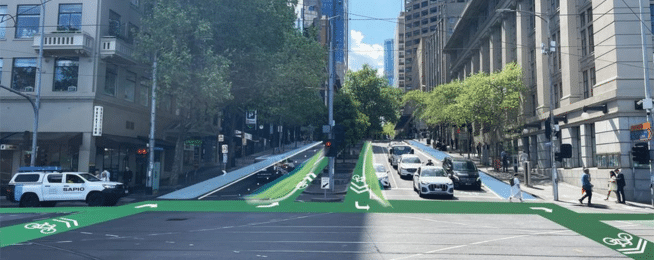The election of a new Lord Mayor for Melbourne has drawn a conga line of candidates – 22 if one counts the conjoined Deputy Lord Mayors on each ticket – each with their share of perplexing policy promises.
One worrying pitch that some have in common though, is the authoritarian desire to banish, move, or otherwise tamper with the Exhibition Street bikes lanes.
Now, we are not here to tell you how to vote.
But we can declare here and now that those lanes are not going anywhere, no matter who gets elected Lord Mayor, or to the elected body of councillors.
The Exhibition Street bike route, as with the other key City of Melbourne bike corridors, has been in the making for decades.
With just a few blocks still to be completed in the final configuration, this route is one of the critical north-south bike corridors, connecting to the Main Yarra Trail in the south and to the Rathdowne and Canning Street routes in the north.
Many years ago, the council and the state government, in consultation with Bicycle Network and other key stakeholders, determined how the future grid of city streets would operate for transport purposes.
Certain streets would be optimised for buses, such as Lonsdale and Queens streets, while others would have bike corridors, such as Exhibition Street and William Street. Streets would be designed around their transport and place-making purpose, taking into account trams, pedestrians, and essential motor traffic, especially delivery vehicles.
And what a resounding success it has been. Melbourne is internationally renowned for its attractiveness to visitors, workers, commerce and residents.
For a long time it has rated at or near the top of the list as the world’s most liveable cities. The economy of the city has been transformed.
This could never have happened if Melbourne had remained a 1960s-style car-dominated CBD, with narrow footpaths, no bike facilities, inferior public transport, and a Swanston Street known as the 'traffic sewer’.
It had to become a people-focused city, with welcoming, friendly streets, crowded bike lanes and pedestrians thronging the footpath, and yes, fewer private vehicles.
We are not going back to the bad old days.
Bike numbers will continue to rise, probably doubling every six to 10 years on popular routes.
But, if certain Lord Mayor aspirants have their way and overrule the many years of strategies, studies, planning, evaluation, construction, trials and not-to-mention numerous council resolutions over the years and manage to recreate four lanes of traffic on Exhibition Street, the traffic sewer will return.
The fact is that the council's own investigations, confirmed by successive council decisions, have established that the Exhibition Street bike lane project has been a success.
This is not a surprise: leading global cities are heading down the same (bike) path and getting the same positive results.
While threatening Melbourne’s bike lanes might be a way of getting a candidate publicity on social media, it is ultimately a foolish and irresponsible tactic. It only shows how little they know or care about how to design a city for a thriving economy: make the streets attractive to people.
Or become our friend and subscribe to receive our fortnightly newsletter.


